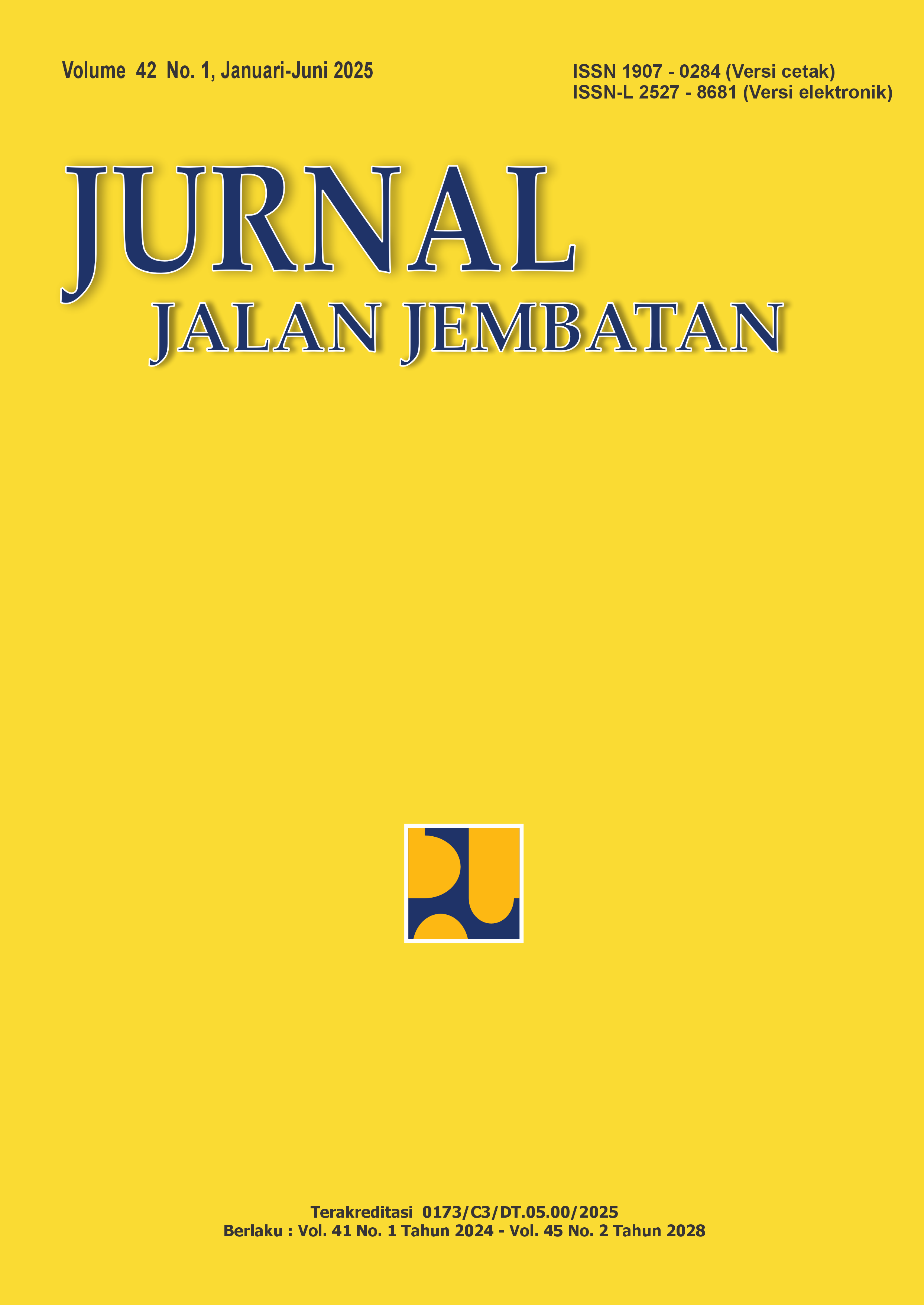EVALUASI KINERJA ENERGI SERAP BALOK JEMBATAN KOMPOSIT KAYU LAMINASI-BETON BERLAPIS CFRP PADA BEBAN STATIS
Main Article Content
Abstract
This study aims to analyse the ability of a glulam-concrete composite bridge beam coated with carbon fibre-reinforced polymer (CFRP) to absorb energy under static loading conditions. The glulam-concrete composite structure was chosen due to the combination of concrete's compressive strength and laminated wood's flexibility, which provides optimal performance in bridge applications. CFRP is used to enhance the beam's resistance to deformation and damage caused by the applied load. The test was conducted by gradually applying static loads to beams coated with 1 Layer, 2 Layers, and 3 Layers of CFRP, as well as to beams without CFRP for comparison. The absorbed energy was calculated by measuring the area under the load-deflection curve, which indicates the amount of energy that the beam can absorb before reaching failure. The results showed that CFRP reinforcement increased the stiffness and strength of the beam but decreased the energy absorption capacity. The beam without CFRP has the highest absorption energy (5773.27 Joules). In comparison, the beam with three CFRP layers has the lowest absorption energy (451.59 Joules), indicating the tendency of brittle and shear failure in laminated beams. Therefore, the number of CFRP layers should be optimised to balance the increase in strength and ductility, thereby preventing sudden failure in structural applications.
Kata Kunci: energi serap, balok jembatan, komposit kayu laminasi-beton, CFRP, beban statis.
Keywords: energy absorption, bridge beam, glulam-concrete composite, CFRP, static loa
Article Details

This work is licensed under a Creative Commons Attribution-NonCommercial-ShareAlike 4.0 International License.
Authors who publish in this journal agree to the following terms:
-
Authors retain copyright and grant the journal the right of first publication with the work simultaneously licensed under a Creative Commons Attribution License, which allows others to share the work with acknowledgment of the work's authorship and initial publication in this journal.
-
Authors may enter into additional contractual arrangements for the non-exclusive distribution of the journal's published version of the work (e.g., post it to an institutional repository or publish it in a book), with acknowledgment of its initial publication in this journal.
-
Authors are permitted and encouraged to post their work online (e.g., in institutional repositories or on their website) as it can lead to productive exchanges, as well as earlier and greater citation of the published work.
Each submitted manuscript must be accompanied by a "Manuscript Originality Statement" and a "Copyright Transfer Statement".

